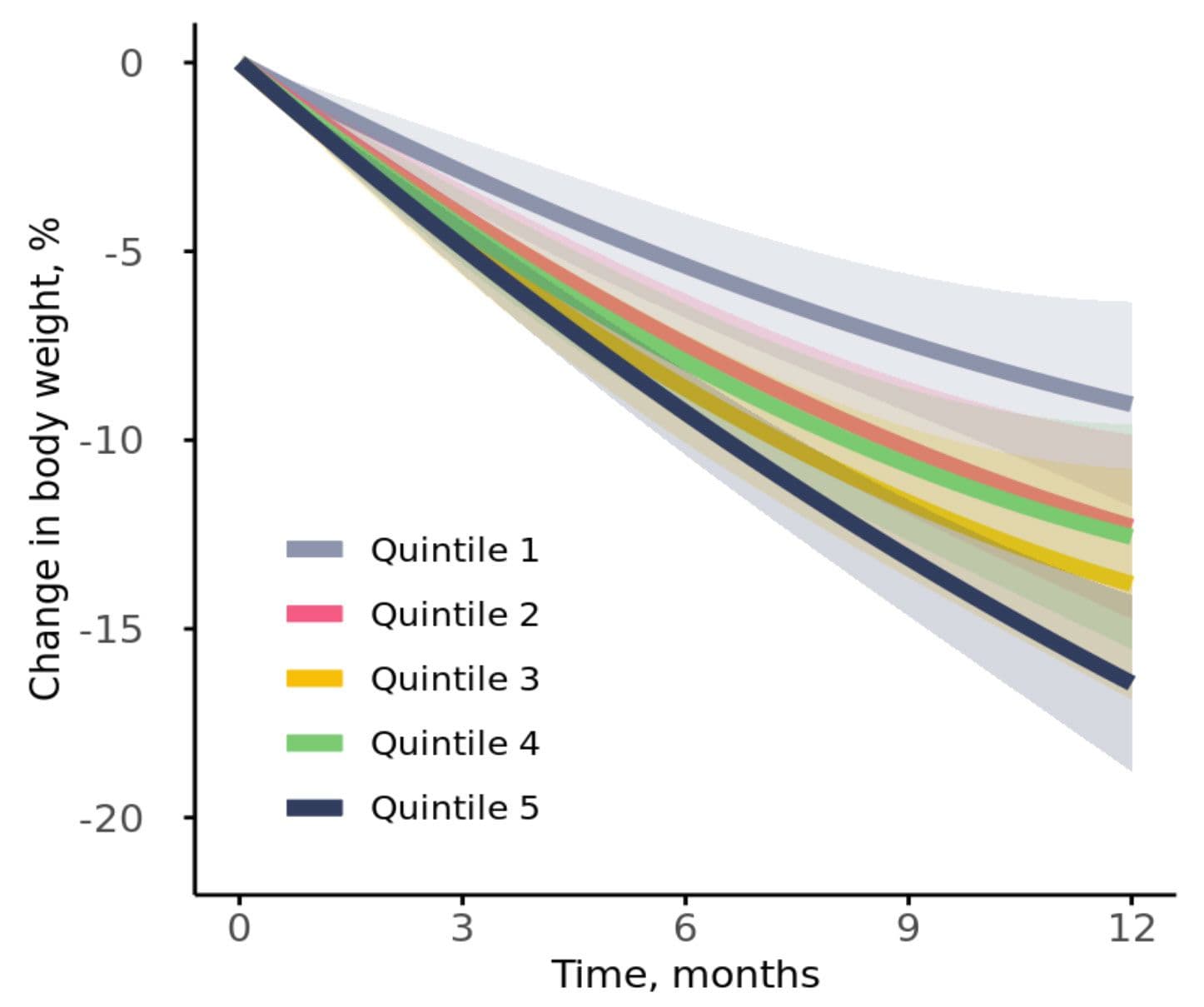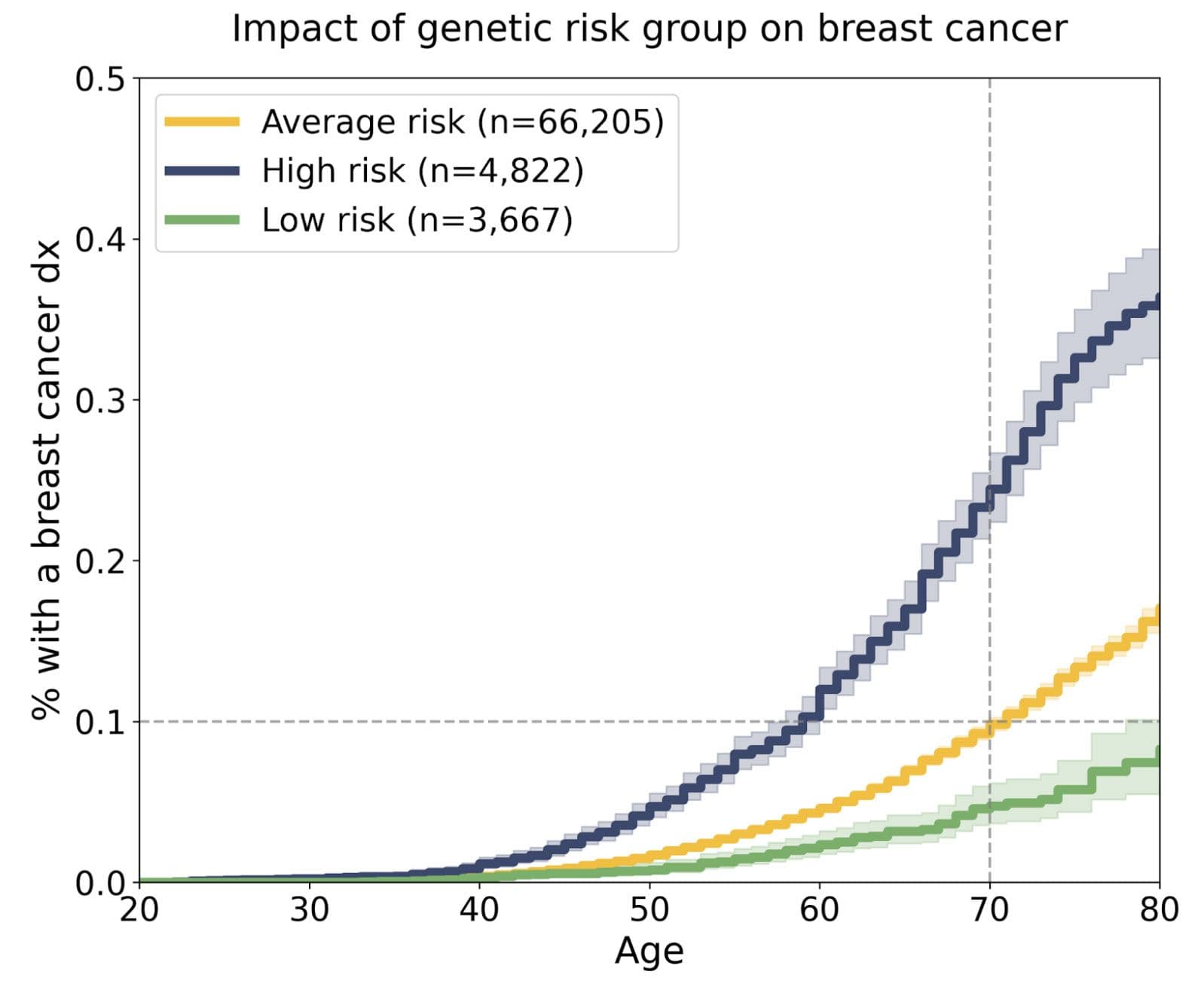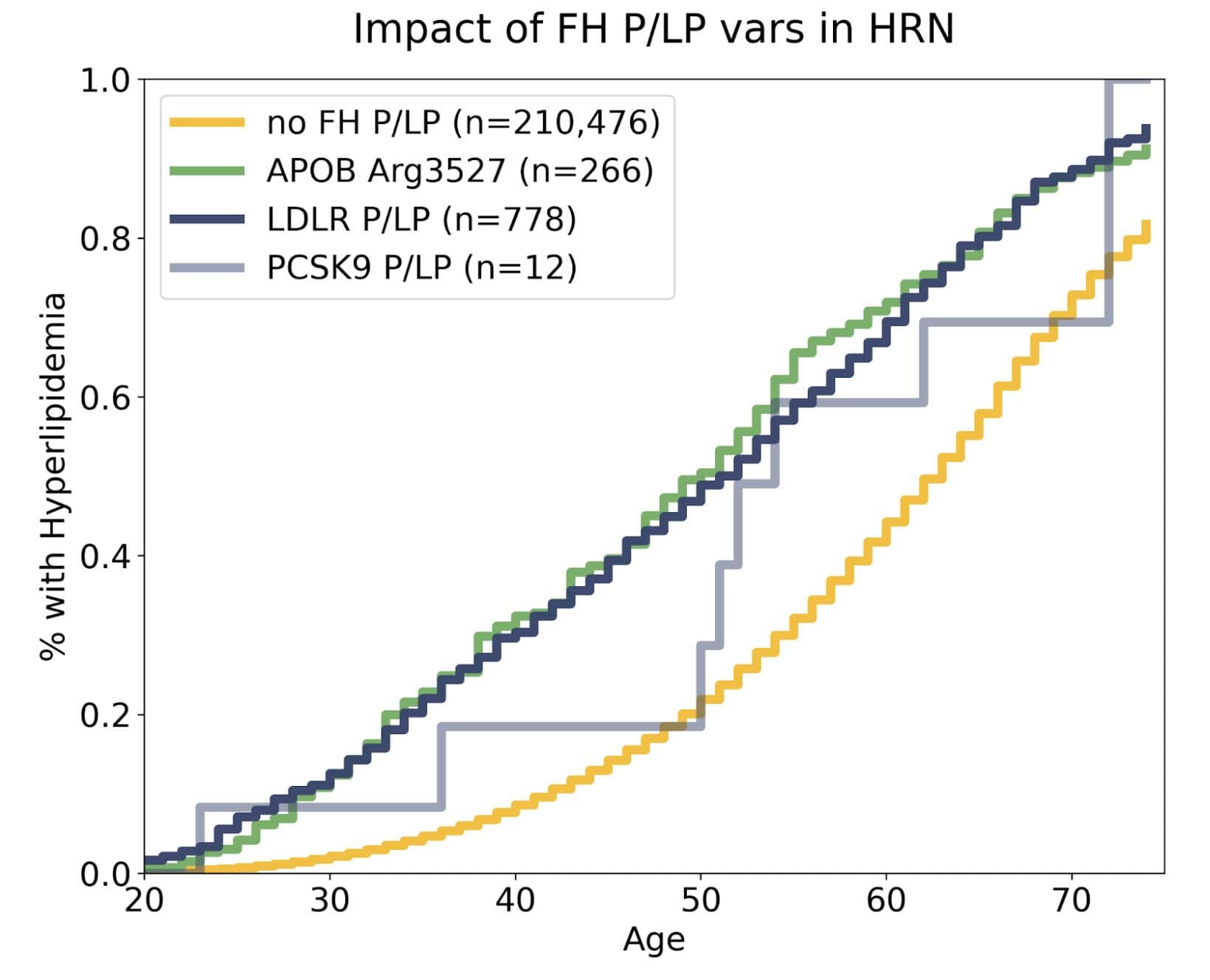European Society of Human Genetics Conference 2025 Posters
Researchers at Helix unveiled clinical research presentations from the Helix Research Network™ at the 2025 ESHG Conference in Milan, Italy showcasing innovative insights on a range of major topics including improved clinical outcomes for FH (familial Hypercholesterolemia), impacts of APOB, precision effectiveness model for weight loss with semaglutide and much more.
Improved Clinical Management Following Diagnosis with Familial Hypercholesterolemia (FH) in the Helix Research Network Population Genomics Screening Program
Objective: To evaluate changes in clinical management and LDL cholesterol (LDL-C) levels among patients identified to have FH in a large population genomics screening program
Results and Conclusions: Identification of FH through the Helix Research Network led to improvements in clinical management and LDL-C levels
EHR documentation of the FH diagnosis code was associated with greater likelihood of therapeutic changes and therefore, larger LDL-C reductions
Achievement of LDL-C target goals stratified by treatment status


Introducing a precision effectiveness model that predicts the 1-year weight loss response to semaglutide
Objective: To develop a precision effectiveness model that predicts the likelihood that patients will achieve ≥10% weight loss within one year of initiating semaglutide treatment.
Results and Conclusions: Findings underscore the value of precision medicine in managing obesity
Integrating genetic and metabolic risk profiling enables more accurate weight loss expectations, optimized patient selection, personalized dosing strategies, and tailored counseling to improve treatment outcomes
Weight loss success stratified by prediction quintile

The benefits of identifying individuals at lower risk of disease in the population
Objective: Using breast cancer for proof of concept: (i) create a framework to identify those at low risk of disease, (ii) assess potential benefits and provide data to justify including a ‘low risk category’ as a potential return of result when screening the population.
Results and Conclusions: Delaying the age to start mammogram screening for women in low-risk group could optimize health care resource allocation. It could save ~300,000 mammograms each year in the US.
The framework established for breast cancer can be leveraged for other conditions, incl. colorectal cancer or coronary artery disease.
Clinical Validity

Untangling the clinical impact of APOB pathogenic variants in the general population
Objectives: Validate that missense variant APOB p.Arg3527Gln causes FH despite being very common in the population
Assess clinical impact of APOB pLOF variants impacting apoB48 and apoB100 (before aa 2153) vs. those only impacting apoB100.
Results and Conclusions: APOB p.Arg3527Gln and p.Arg3527Trp had the same clinical impact on lipid levels and statin prescriptions as LDLR pathogenic variants in the general population despite being relatively common.
APOB pLOF variants are protective against FH-related disease.
pLOF variants impacting apoB100 isoform had a bigger impact on atherosclerotic cardiovascular disease development compared to pLOFs impacting both APOB isoforms.
Impact of APOB P/LP vars for FH

Categories